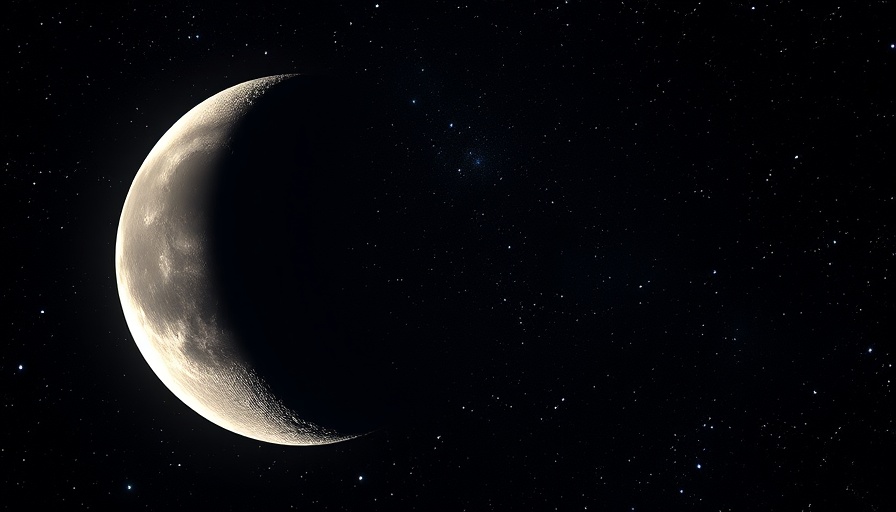
Experience the Majestic Dance of the Moon and Pleiades
This July 20, stargazers across the contiguous U.S. and Canada are invited to witness the final lunar occultation of the Pleiades star cluster in 2025. If the skies are clear, prepare to step outside after midnight to catch a glimpse of a slender crescent moon approaching the Pleiades, only four days before it reaches its new phase. With a brightness of 23% illumination, this encounter is set to create a breathtaking visual scene that is perfect for binoculars or small telescopes.
Why This Event is Special
The allure of the Pleiades, a cluster often referred to as the "Seven Sisters," is rooted not just in its beauty but also in its rich cultural significance across various civilizations. This upcoming event is particularly noteworthy as it marks the third occasion this year that the moon has passed in front of this star cluster. Earlier occurrences were on January 9 and February 5-6, when a more illuminated moon obscured these stars, but this time, observers will experience a different dynamic as the moon will be a waning crescent.
Observing Tips for the Best Experience
To fully appreciate this astronomy event, observers should prepare ahead. The moon will rise at approximately 1:00 a.m. local daylight time, making it essential to either stay up or set an alarm for the predawn hours. A small telescope will greatly enhance the experience, as binoculars might not suffice to spot the stars in the moon's bright glare. It’s recommended to use at least a 50x magnification telescope that can be easily tracked to follow the moon as it approaches the Pleiades, allowing for a clearer view as stars begin to disappear and reappear dramatically behind the moon's edges.
Navigating Environmental Challenges
While the event is promising, it comes with its challenges. In northeastern U.S. and Canada's Maritime Provinces, observers may contend with increasing twilight, which could obscure visibility as the moon draws closer to the Pleiades. However, a vivid sight of the crescent moon positioned near the star cluster should still be feasible, adding a touch of magic to any backyard astronomy setup.
The Science Behind the Occultation Event
Astrophysically speaking, an occultation event occurs when one celestial body passes in front of another, obscuring it from view. This event allows astronomers and enthusiasts alike to study the scale, distance, and brightness of celestial bodies with unprecedented accuracy. The Pleiades, around 1.5 degrees wide, will provide stark juxtaposition against the smaller crescent moon, offering a striking visual and educational opportunity for budding astronomers.
Embracing the Night Sky
This fascinating occurrence not only invites stargazers to glimpse a captivating cosmic dance but also inspires a deeper connection with the innovations in observational technology. Enthusiasts are encouraged to leverage modern advancements, whether through connecting high-tech telescopes to smartphones or utilizing apps that provide data on star positions during occultation events.
Conclusion: Don’t Miss This Celestial Event
As July 20 approaches, take this chance to step outside and marvel at the vastness of the universe. Prepare your gear, gather your friends or family, and enjoy this unique illumination provided by our closest celestial neighbor. It's not just an event; it's a celebration of innovation in the field of astronomy as well. So mark your calendars and get ready for a night of wonder that blends science with the beauty of the cosmos.
 Add Row
Add Row  Add
Add 




Write A Comment